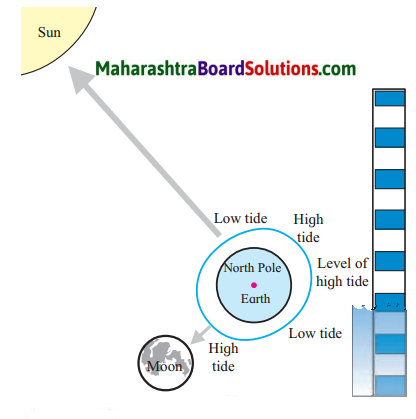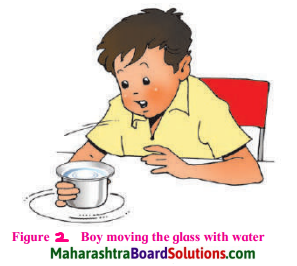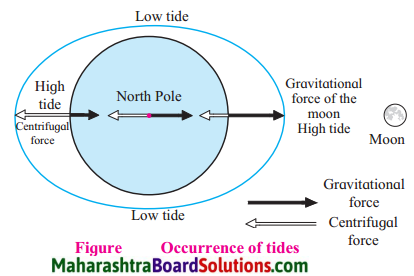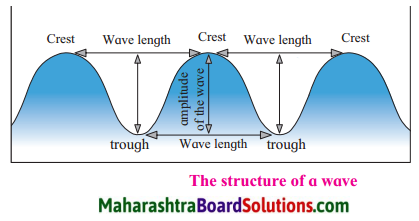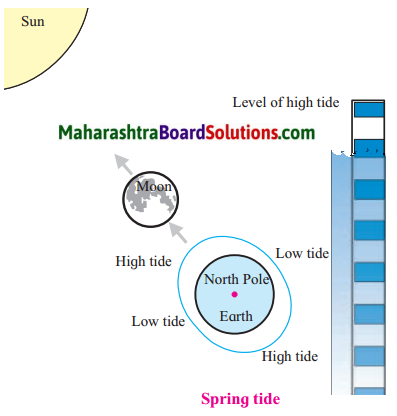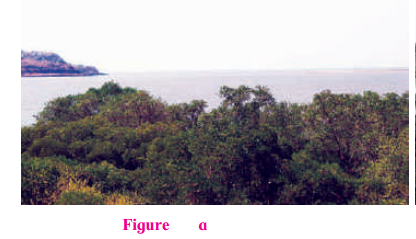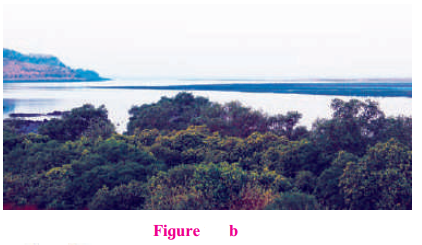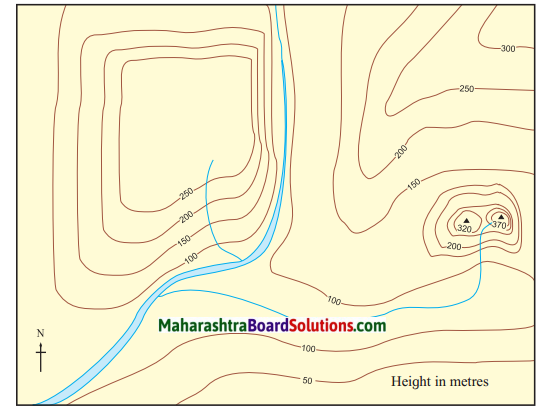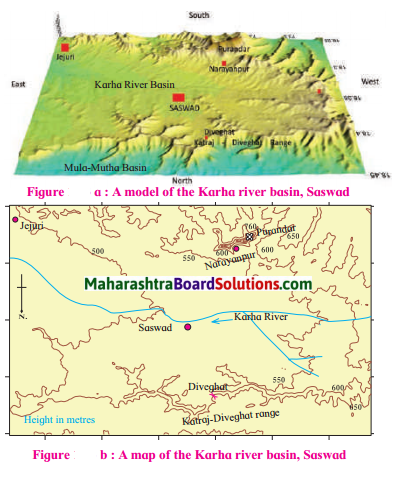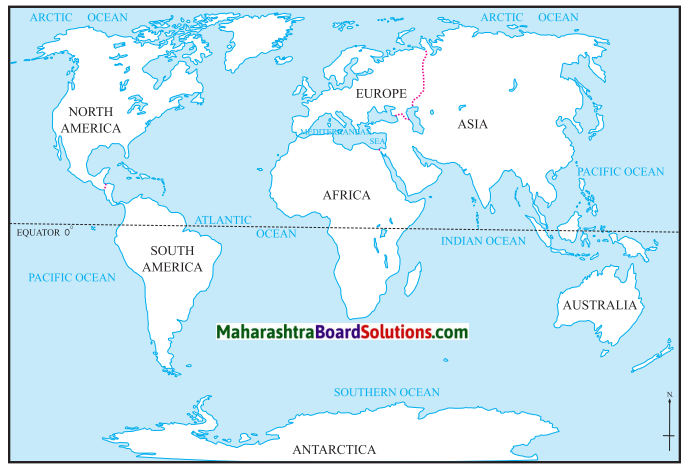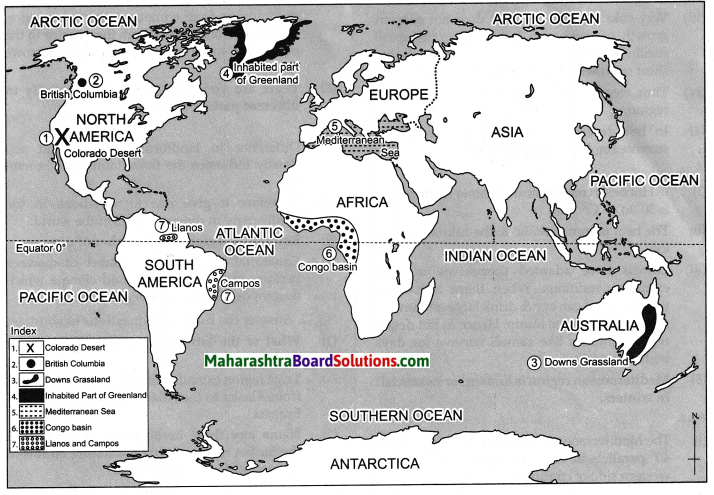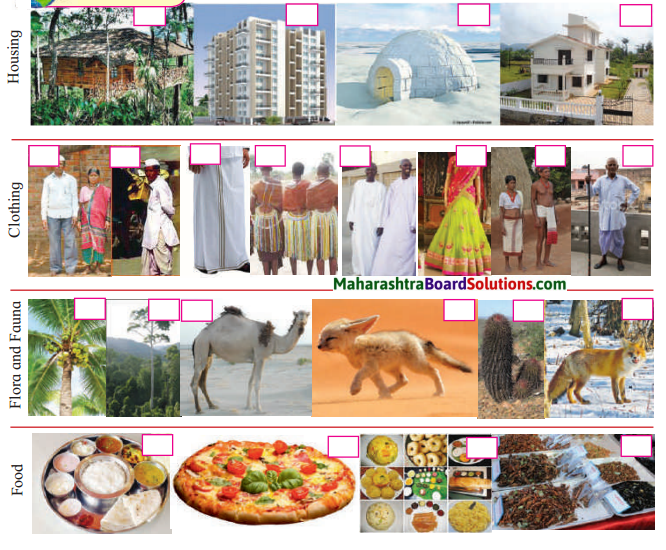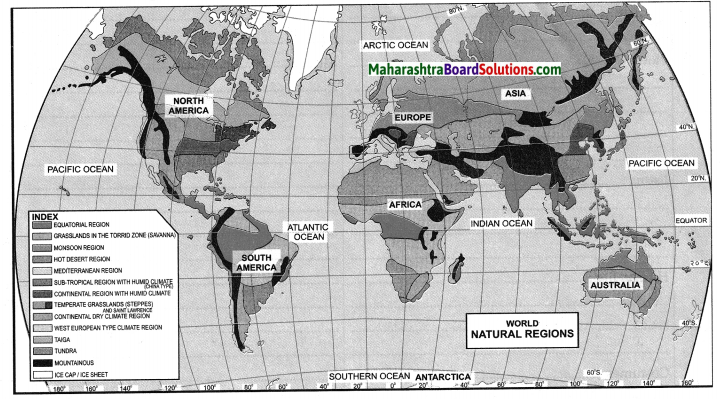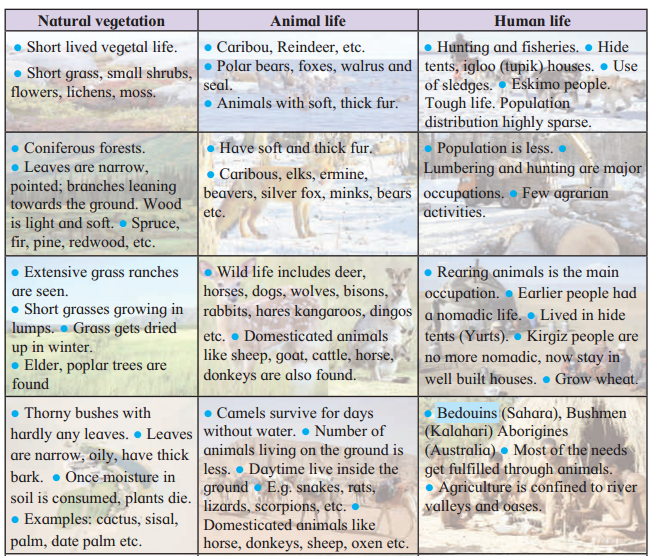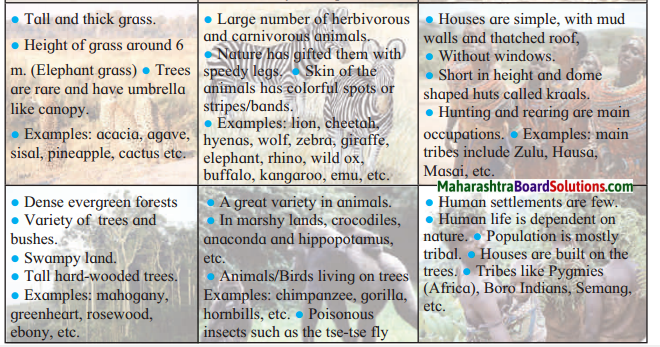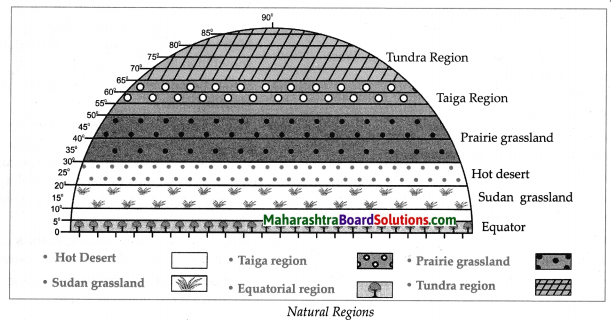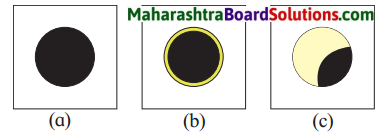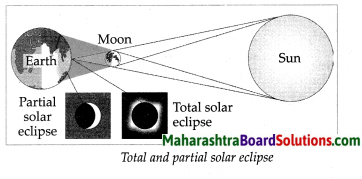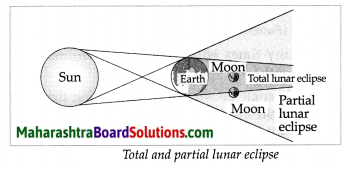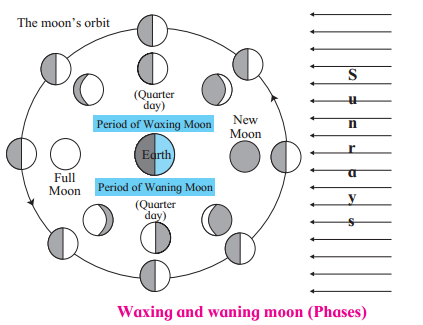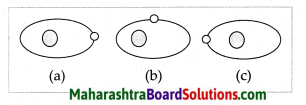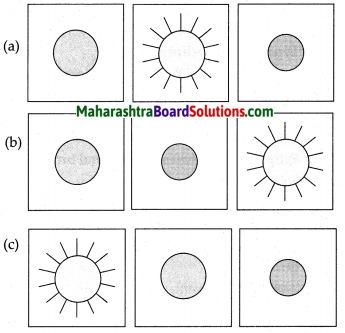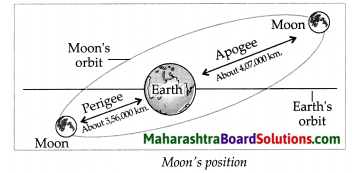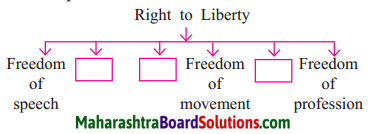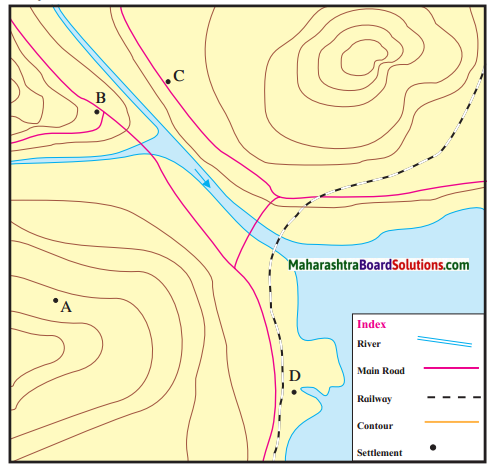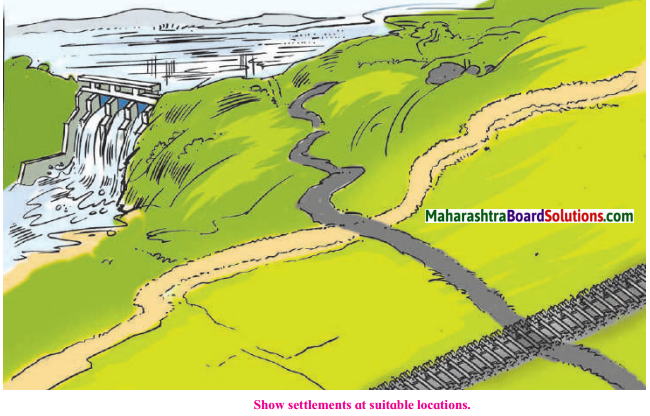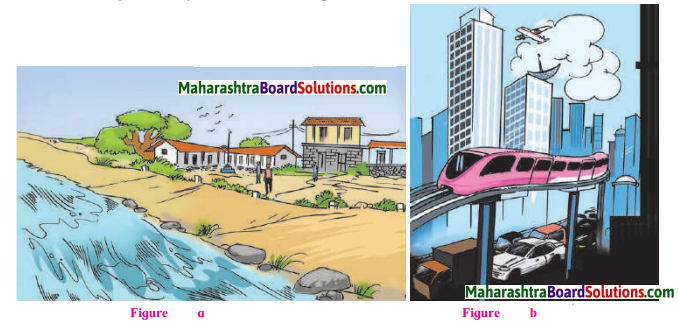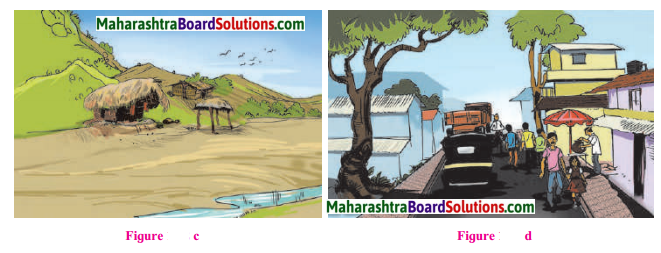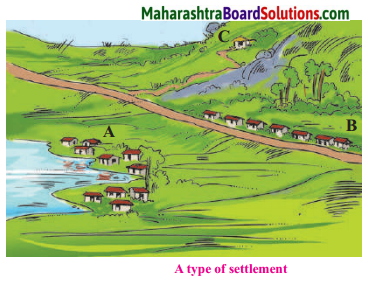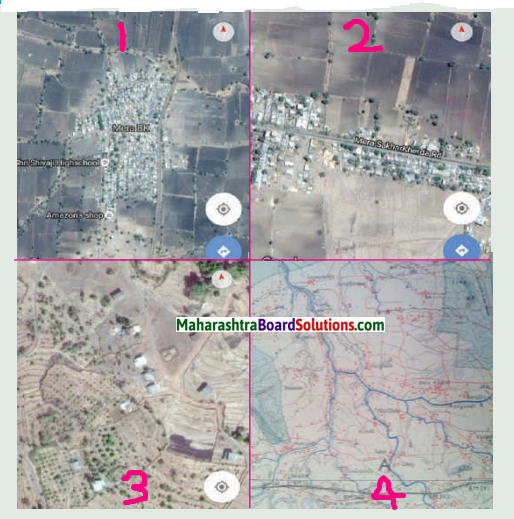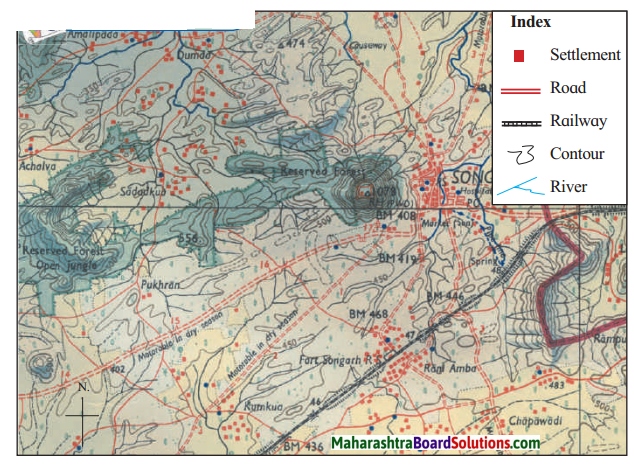Balbharti Maharashtra State Board Class 12 History Solutions Chapter 11 India Transformed Part 1 Textbook Exercise Questions and Answers.
Std 12 History Chapter 1 Question Answer India Transformed Part 11 Maharashtra Board
Class 12 History Chapter 11 India Transformed Part 1 Question Answer Maharashtra Board
History Class 12 Chapter 11 Question Answer Maharashtra Board
1A. Choose the correct alternative and rewrite the statement.
Question 1.
A legal agreement was signed in Geneva which is known as ____________
(a) SEATO
(b) NATO
(c) GATT
(d) SAARC
Answer:
(c) GATT
Question 2.
An act similar to ‘Right to Information’ was first applied in ____________ in 1776.
(a) Sweden
(b) France
(c) England
(d) India
Answer:
(a) Sweden
![]()
Question 3.
The birth anniversary of Swami Vivekananda is observed as ____________
(a) National Education Day
(b) National Youth Day
(c) National Integration Day
(d) National Science Day
Answer:
(b) National Youth Day
2A. Write the names of historical places/persons/events.
Question 1.
In 2004, this became the biggest firm in Asia providing software services –
Answer:
Tata Consultancy Services
Question 2.
In 2002, the Metro railway was flagged off –
Answer:
The Delhi Metro Railway
2B. Choose the correct reason from those given below and complete the sentence.
Question 1.
India became member of World Trade Organisation, because ____________
(a) India want to compete with other nations
(b) India cannot stay aloof from the global economy
(c) India adopted the policy of liberalisation
(d) India wanted to be in the leading position at the global level
Answer:
(c) India adopted the policy of liberalisation
3. Complete the following concept map.
Question 1.

Answer:
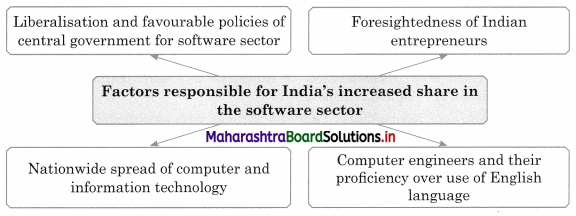
4. Write short notes.
Question 1.
The Youth Policy of Government of India.
Answer:
- India is a country with a maximum proportion of young people. Individuals in the age group of 15-29 are considered as ‘youth’.
- Youth, if provided with opportunities, for education and skill training, can contribute significantly to the development of India.
- A number of centers of‘Nehru Yuva Kendra Sangathan’ were established in 1972 for the training of young people in various skills.
- The programmes run by these centers were eventually merged in the ‘National Youth Empowerment Programme’. This programme put a thrust on topics like literacy, education, health and hygiene, family welfare, preservation and conservation of the environment, awareness of social issues, rural development, and self-employment.
- 12th January the birth anniversary of Swami Vivekanand is celebrated as ‘National Youth Day. National Youth Festival is also celebrated in the month of January. This festival is designed to provide a platform for the artistic talents of young individuals.
- ‘Youth Hostels Association of India’ has established youth hostels in various parts of the country which works for encouraging adventure skills among young people.
- Training programmes are arranged by this association through ‘Bharat Scout and Guides, National Service Scheme and National Cadet Corps’.
![]()
Question 2.
‘Pradhan Mantri Gram Sadak Yojana’.
Answer:
- The Government of India knows the importance of having roads in good condition in the interior areas started ‘Pradhan Mantri Gram Sadak Yojana’ in 2000.
- Initially, the work of building roads began by linking the villages of population strength up to 1000. In 2001 this programme was merged in ‘Pradhan Mantri Gramoday Yojana’.
- The roads measuring about 75000 km. were completed till 2005. The purpose of this work was to extend the benefits of the country’s economic growth to people living in rural areas and to bring transformation in their lives.
- It aimed at providing amenities for good health, education, drinking water, dwellings, roads, and electricity.
5. State your opinion.
Question 1.
India is a leading country in the field of space research.
Answer:
- In 2007, India entered a new field of space research. It commercially launched the Italian satellite.
- Other countries had submitted tenders quoting very high rates, to get this contract. However, India got this contract by quoting reasonable rates.
- Before entering this field on a commercial basis, India had already successfully launched the satellite of Argentina, Belgium, South Korea, Indonesia, and Germany.
- In 2008, India launched ‘Chandrayaan-1’, the first lunar probe. India could collect evidence for the presence of water on the moon through this satellite.
- After that India also launched ‘Chandrayaan-2’ and ‘Mangalyaan’.
- All these achievements proved that India is a leading country in the field of space research.
6. Answer the following questions in detail.
Question 1.
Which programmes were launched in India for making the opportunities of wage-earning?
Answer:
Creating employment opportunities for an ever-increasing population is a major challenge for the government. There are several programmes launched by the government of India for wage earners.
These programs are as follows:
- Pradhan Mantri Rojgar Yojana and ‘Rojgar Hami Yojana’: To create job opportunities for educated youth the ‘Ministry of Commerce and Industry of the Government of India started this plan on 2nd October 1993 on the birth anniversary of Mahatma Gandhi.
- Rojgar Hami Yojana was to assure daily wages to the unemployed agricultural labourers. The objective of this plan was to provide wage-earning opportunity, who was in search. This programme was launched in 257 districts in India. A goal was to provide work to two young laborers in each family below the poverty line. In 2001, this plan was merged in ‘Gramin Rojgar Yojana’.
- In 1998, to provide support to farmers in difficult times “Kisan Credit Card” plan was started. It helps the farmer to avail funds for essential equipments and seeds for cultivation. Later, an insurance facility was also offered to farmers, who were Kisan Credit Card holders.
- Suvarnajayanti Gramin Svayam Rojgar Yojana: This plan was launched in 1999 by merging various plans together namely ‘Ekatmik Gramin Vikas Yojana’, Self-employment training programmes, ‘Ganga Kalyan Yojana’ etc.
- Jawahar Gram Samruddhi Yojana: In 1999, a new plan was implemented with the intention to provide adequate employment for unemployed men and women. It was merged in ‘Sampoorna Gramin Rojgar Yojana’ in 2001.
- Sampoorna Gramin Rojgar Yojana: This plan made provision for creating opportunities in rural areas of earning wages, to provide food grains in exchange for work, etc. This scheme was started in 150 economically backward districts in the country. In 2006, this scheme was merged in ‘Rashtriya Gramin Rojgar Hami Yojana’.
- Rashtriya Gramin Rojgar Hami Yojana: Under this scheme, each family in rural areas were given assurance of at least 100 days of work.
7. Answer the following question with the help of the given points.
Question 1.
Give information about the ‘Right to Information Act.
(a) Background of the act and the beginning of this movement in India.
(b) Definition of ‘Information’.
(c) The rights of citizens under this act.
Answer:
(a) Background of the act and the beginning of this movement in India:
- This kind of Act was first implemented in Sweden in 1776. In 1946, ‘United Nations’ declared the ‘Right to Information to be the fundamental human right.
- In 1982, L.K. Kulwant, a resident of Jaipur in Rajasthan, a social activist initiated the process by applying to know the Jaipur Municipal Corporation’s work for cleaning the city.
- The High Court gave a clear verdict stating that ‘Right to Information is a fundamental right of all citizens.
- In 1990, Aruna Roy started the movement called ‘Majdoor Kisan Shakti Sanghatan’. A need for ‘Right to Information was started through this movement.
- Harsh Mander, the Divisional Commissioner of Bilaspur showed courage to disclose official information while serving as a bureaucrat.
- The struggle of Anna Hazare in 2001, had a decisive role in Maharashtra in this matter. The Act was implemented in Maharashtra on 12th October 2005.
![]()
(b) Definition of ‘Information’:
The definition of term ‘Information’ includes official records, documents, memoranda, emails, comments, consultations, press notes, circulars, orders, logbooks, tenders, reports, correspondence, formats, models, electronic data, the information of a private institution or an individual that is available in the records of any public establishment.
(c) The rights of citizens under this act:
- Right to information grants access to official documents, records, permission to obtain their copies, to take notes, to extract passages, to get samples of authorised material and prints of data stored in CDs, Floppy discs, tapes, video cassettes, or in any other form, or stored on computers.
- Citizens can get the desired information after submitting an application to the ‘Information officer’ of a ‘Public Authority.
Class 12 History Chapter 11 India Transformed Part 1 Intext Questions and Answers
Collect information of following schemes: (Textbook Page No. 92)
National Pension Scheme, Pradhan Mantri Suraksha Vima Yojana, Pradhan Mantri Jeevan Jyoti Vima Yojana, Atal Pension Yojana, Indian Post Payments Bank.
Answer:
(A) National Pension Scheme:
- The National Pension Scheme is a voluntary contribution of the pension system in India which is sponsored by the government of India.
- This scheme was started by the Government of India in 2004 for all government employees.
- The scheme was made open to all citizens in 2009. It is a voluntary and long-term retirement scheme. It is regulated by Pension Fund Regulatory and Development Authority (PFRDA) and the central government.
- Any employee from the public, private, and even the unorganized sectors can opt for this.
- Personnel from the armed forces are not allowed. The scheme is open to all across industries and locations.
(B) Pradhan Mantri Suraksha Vima Yojana:
- The scheme is available to people in the age group 18 to 70 years with a bank account who give their consent to join/enable auto-debit on or before 31st May for the coverage period 1st June to 31st May on an annual renewal basis.
- Aadhar would be the primary KYC for the bank account. The risk coverage under the scheme is ₹ 2 lakh for accidental death and full disability and ₹ 1 lakh for partial disability.
- The premium of 112 per annum is to be deducted from the account holder’s bank account through ‘auto-debit facility in one installment.
(C) Pradhan Mantri Jeevan Jyoti Vima Yojana:
- Pradhan Mantri Jeevan Jyoti Vima Yojana is available to people between 18 and 50 years of age with a bank account.
- This scheme was launched on 9th May 2015 by Prime Minister Narendra Modi in Kolkata.
- It has an annual premium of ₹ 330. In case of death due to any cause, the payment to the nominee will be ₹ 2 lakh.
- As of 31st March 2019, 5.92 crore people have already enrolled for this scheme.
(D) Atal Pension Yojana:
- Atal Pension Yojana is a pension scheme under the Government of India.
- This scheme replaces the Swavalamban Yojana and was established to provide old age income security to the workers belonging to the unorganized sector.
- The Atal Pension Yojana was launched by Prime Minister Narendra Modi on 9th May 2015 in Kolkata.
- The scheme focuses on encouraging workers of the unorganized sectors to save for their future (Age limit 18-40 years).
(E) Indian Postal Payments Bank :
- The Indian Postal Payment Bank was launched on September 1, 2018, by Prime Minister Narendra Modi that aims at making banking services available at people’s doorstep.
- This is a 100% Government-owned public sector bank, operating with the Department of Posts under the Ministry of Communications.
- IPPB would be like any other bank but it will operate at a smaller scale without involving any credit risks and can’t issue advance loans or issue credit cards.
![]()
Let us know: (Textbook Page No. 92)
Collect information with the help of the internet about the ‘Rafi Ahmad Kidwai National Postal Academy (Gaziabad).
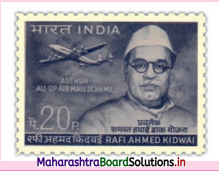
Answer:
- Rafi Ahmad Kidwai National Postal Academy, recently called Postal Staff College India (PSCI) is the apex training institution of Indian postal services.
- It was set up in the year 1977. Initially, the college functioned from Sanchar Bhavan and later from Dak Bhavan in Delhi.
- It was shifted to its present location in Gaziabad in the year 1990. It is a central training institute and has the primary role of training and grooming the young officers who get recruited to the Indian Postal Service.
- It also conducts various in-service training programmes on postal management for Postal Service officers in India and other foreign postal administrations.
- Its goal is to make the officers of the department of posts professionally competent to handle the ever-changing communication market.
- Training Program:
- Advanced Development Program
- Executive Development Program
- Technology Management Program
- Postal Life Insurance
- Leadership Development for postmasters and mangers
- Quality Management
Let us collect information (Textbook Page No. 92)
Collect information about various services like ‘Sarvabhaum Suvarn Rokhe’ (Gold Bonds issued by the Government), ‘Electronic Indian Postal Order’, ‘E-Dakghar’, ‘E-Payment Portal’, ‘Mobile App’ etc. by interviewing the Postmaster of any branch.
Answer:
(A) Sarvabhaum Suvarn Rokhe:
- This scheme was launched by Government in November 2015, under Gold Monetisation Scheme. The issues are made open for subscription in tranches by RBI in consultation with GOI.
- As per RBI instructions, every application must be accompanied by the PAN number issued by the income tax department to the investors as the PAN number of the first/ sole applicant is mandatory.
- SGBs are government securities denominated in grams of gold. They are substitutes for holding physical gold. Investors have to pay the issue price in cash and the bonds will be redeemed in cash on maturity. The bond is issued by Reserve Bank on behalf of the government of India.
- The SGB offers a superior alternative to holding gold in physical form. The quantity of gold for which the investor pays is protected since he receives the ongoing market price at the time of redemption /premature redemption.
(B) Electronic Indian Postal Order:
- The Department of Personnel and Training and Department of Posts have launched a service called e-IPO (Electronic Indian Postal Order) to enable the Indian citizens abroad to purchase an Indian Postal Order electronically by paying fee on-line through the e-post Office portal i.e., http://www.epostoffice.gov.in.
- It also facilitates them to file the Right to Information (RTI) application. Registration is mandatory to avail of this facility. Options for new account creation, user verification, search e-IPO, etc are available.
(C) e-Payment portal:
- e-Payment is a smart option for businesses and organizations to collect their bills or other payments through post office networks.
- When businesses require the collection of bills and other payments from customers across the country, Post offers them a simple and convenient solution in the form of e-payment.
- e-Payment is a many-to-one solution that allows the collection of money (telephone bills, electricity bills, examination fees, taxes, university fees, school fees, etc) on behalf of any organization. The collection is consolidated electronically using web-based software and payment is made centrally through cheque from a specified Post Office of billers choice.
- The information and MIS regarding the payment can be seen by the biller online. The MIS will contain the five fields of billers choice like name, telephone number, application number, etc. The services are currently available through more than 14,000 Post offices across the country.
- There is an agency in the market today with a large reach and establishing trust as the Post Office where the public can comfortably deposit all their bills in their neighbourhood.
![]()
(D) e-Dak Ghar:
The e-Post Office of India post offers a variety of online Postal services to the users. One can avail services-philately (purchase of stamps), PLI/RPLI (payment of the premium), and IPO (purchase order for RTI).
(E) Mobile app:
- The IPPB app is available on both Android and iOS platforms. This app, however, can only be used by those individuals who have an account in a core banking-enabled post office. KYC of the account should also be completed in advance.
- Internet banking and mobile banking services should also be completed in advance.
- Using the mobile app, account holders can also view account balances and statements, transfer funds, request a checkbook, stop payment on a cheque, use sweep-in-sweep-out facilities, and pay utility bills.
Project (Textbook Page No. 98)
Collect information about the States of India and Union Territories, as well as the names of their capital cities, with the help of the internet.
Answer:
The states of India and its capitals are as follows:
| States | Capital |
| 1. Andhra Pradesh | Hyderabad |
| 2. Arunachal Pradesh | Itanagar |
| 3. Assam | Dispur |
| 4. Bihar | Patna |
| 5. Chhattisgarh | Raipur |
| 6. Goa | Panaji |
| 7. Gujrat | Gandhinagar |
| 8. Haryana | Chandigarh |
| 9. Himachal Pradesh | Shimla |
| 10. Jharkhand | Ranchi |
| 11. Karnataka | Bengaluru |
| 12. Kerala | Thiruvananthapuram |
| 13. Madhya Pradesh | Bhopal |
| 14. Maharashtra | Mumbai |
| 15. Manipur | Imphal |
| 16. Meghalaya | Shillong |
| 17. Mizoram | Aizawl |
| 18. Nagaland | Kohima |
| 19. Odisha | Bhubaneswar |
| 20. Punjab | Chandigarh |
| 21. Rajasthan | Jaipur |
| 22. Sikkim | Gangtok |
| 23. Telangana | Hyderabad |
| 24. Tamil Nadu | Chennai |
| 25. Tripura | Agartala |
| 26. Uttar Pradesh | Lucknow |
| 27. West Bengal | Kolkata |
| 28. Uttarakhand | Dehradun |
Union Territories and its Capitals:
| Union Territories | Capitals |
| 1. Anadaman and Nicobar Island | Port Blair |
| 2. Chandigarh | Chandigarh |
| 3. Dadra and Nagar Haveli and Daman and Diu | Daman |
| 4. Delhi | New Delhi |
| 5. Lakshadweep | Kavaratti |
| 6. Puducherry | Pondicherry |
| 7. Ladakh | Leh (summer), Kargil (winter) |
| 8. Jammu and Kashmir | Srinagar (summer) Jammu (winter) |
12th Std History Questions And Answers:
- Renaissance in Europe and Development of Science Class 11 History Questions And Answers
- European Colonialism Class 11 History Questions And Answers
- India and European Colonialism Class 11 History Questions And Answers
- Colonialism and the Marathas Class 11 History Questions And Answers
- India: Social and Religious Reforms Class 11 History Questions And Answers
- Indian Struggle against Colonialism Class 11 History Questions And Answers
- Decolonisation to Political Integration of India Class 11 History Questions And Answers
- World Wars and India Class 11 History Questions And Answers
- World: Decolonisation Class 11 History Questions And Answers
- Cold War Class 11 History Questions And Answers
- India Transformed Part 1 Class 11 History Questions And Answers
- India Transformed Part 2 Class 11 History Questions And Answers





